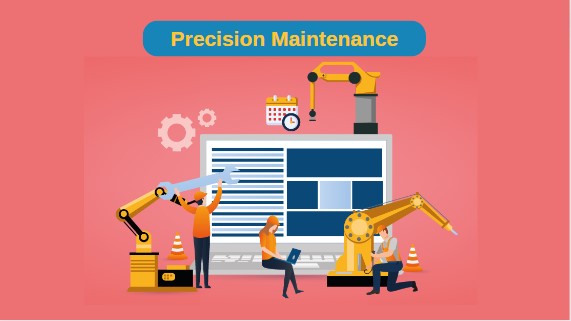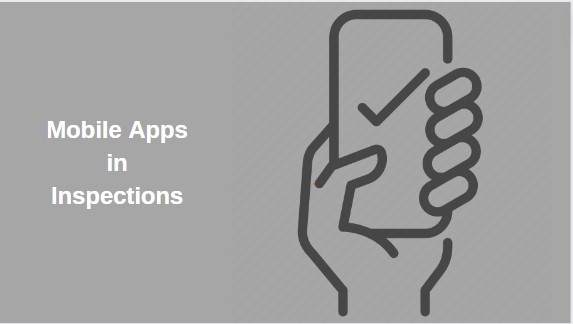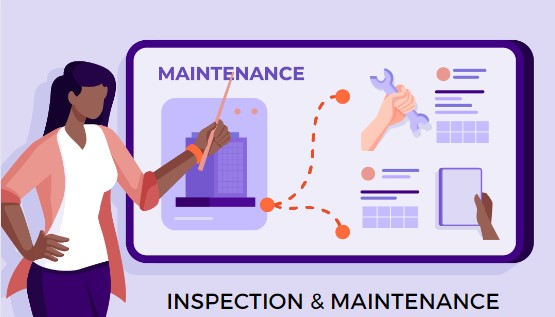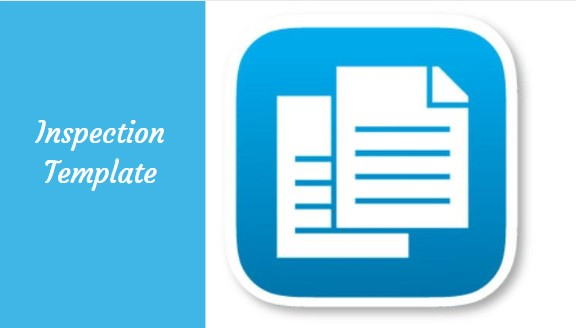
5 Best Tips for Good Facility Inspections
Madhurima Sanyal |
31 Jan 2024 |
13:12 PM
- Defining Facility Inspections
- Importance of Effective Inspections
- The Connection Between Maintenance and Inspections
- Standardizing the Inspection Process
- Understanding the Inspection Process
- Benefits of Standardization
- Incorporating Best Practices
- Embracing Mobile Assessment Apps
- Advantages of Mobile Apps in Inspections
- Integration with Inspection Processes
- Optimizing Inspection Frequency
- Factors Influencing Inspection Frequency
- Strategies for Determining Frequency
- 5 Tips for Good Facility Inspections
- Conclusion

Benefits of Precision Maintenance
Pratik Lohiya 01 Mar 2024 | 12:46 PMUnlock the potential of precision maintenance for enhanced asset management and increased operational efficiency through a positive maintenance culture and continuous improvement initiatives....
Facility inspections stand as the cornerstone of a robust operational framework, ensuring a secure environment for businesses. In essence, an inspection is more than a routine check; it's a proactive measure to guarantee safety, compliance, and operational excellence. The process involves a meticulous evaluation of various elements within a facility, encompassing equipment, safety protocols, and compliance measures.
Defining Facility Inspections
Facility inspections encompass a systematic review of all components within a facility, from physical assets like machinery and equipment to intangible aspects such as safety protocols and compliance adherence. The primary objective is to identify and mitigate potential risks, ensuring the smooth functioning of operations.
Inspection checklist is not merely about ticking off checkboxes; they involve a comprehensive assessment that considers the intricacies of operational processes, employee safety, and adherence to regulatory standards.
Importance of Effective Inspections
Effective facility inspections are pivotal for several reasons. They act as a preemptive strike against potential issues, providing a structured approach to risk management. Real-time monitoring during inspections ensures immediate identification of hazardous conditions, allowing for swift corrective actions.
This not only enhances safety but also prevents wasting time and resources on addressing issues that could have been proactively managed. Moreover, routine inspections instill a culture of compliance and good practices, fostering continuous improvement within the facility.
The Connection Between Maintenance and Inspections
The symbiotic relationship between maintenance and inspections is undeniable. Maintenance requirements often surface during inspections, and addressing them promptly is key to facility management. Identifying areas for enhancement through inspections enables a targeted approach to maintenance, reducing the likelihood of equipment downtime.
This interconnectedness underscores the significance of integrating inspections seamlessly into the broader maintenance management strategy, creating a harmonious cycle of evaluation and correction.
Standardizing the Inspection Process
Standardizing inspection processes is akin to establishing a roadmap for operational excellence in facility management. This systematic approach involves creating a unified set of procedures and criteria that guide an inspector through each evaluation.
Standardization ensures that every inspection, regardless of the inspector or the area of focus, adheres to a consistent framework. By fostering a sense of uniformity, organizations can elevate the reliability and efficiency of their inspections.
Understanding the Inspection Process
At its core, the process of inspection is a meticulous examination designed to uncover potential issues and ensure compliance with safety standards and regulations. Inspectors play a crucial role in navigating this process, meticulously assessing equipment, safety measures, and overall facility conditions.
Understanding the nuances of each inspection step, from initial planning to the final evaluation, empower facility managers to make informed decisions that contribute to the facility's overall safety and efficiency.
Benefits of Standardization
Standardization brings a myriad of advantages to the inspection process. Firstly, it establishes a common language and methodology, reducing the likelihood of misinterpretation or oversight. This consistency enhances efficiency by enabling inspectors to cover more ground without compromising the depth of their assessments.
Standardization also facilitates data analysis, allowing organizations to identify trends and patterns across various inspections, paving the way for continuous improvement.
Incorporating Best Practices
Real-time monitoring during inspection processes ensures that hazardous conditions are detected promptly, allowing for swift corrective actions. Identifying areas for improvement becomes more effective when best practices are integrated, creating a dynamic feedback loop for ongoing enhancement.
By aligning inspections with industry standards and embracing innovative approaches, organizations can not only meet compliance requirements but also foster a culture of proactive improvement within their facilities.
Embracing Mobile Assessment Apps
In the digital age, embracing mobile assessment apps has become a transformative practice in facility inspections. These apps serve as indispensable tools for inspectors, providing a dynamic platform that enhances the efficiency and effectiveness of the entire inspection process. Leveraging the capabilities of mobile devices, an inspector can seamlessly integrate technology into their workflows, ensuring a more streamlined and responsive approach to facility assessments.
Advantages of Mobile Apps in Inspections

Mobile apps streamline inspections by enabling real-time data entry, enhancing accuracy through automated validation and multimedia integration, and facilitating instant communication and collaboration within maintenance team. With offline capabilities, regular inspections can work anywhere, while automatic report generation and adherence to standards ensure safety and regulatory compliance.
The shift from paper-based processes reduces costs, human error and environmental impact. User-friendly interfaces and analytics provide a comprehensive solution, improving overall effectiveness in diverse industries. Mobile apps also enable inspection team to capture and annotate images directly, providing a visual documentation that enhances the precision of their findings.
Integration with Inspection Processes
The seamless integration of mobile apps with inspection schedule is a game-changer for facility managers and their inspection teams. These apps facilitate structured inspection data collection, ensuring that relevant stakeholders have instant access to critical information. The ability to input data directly into the system mitigates the risk of human error associated with manual data entry. Furthermore, mobile apps enhance collaboration among facility managers, enabling efficient communication while inspecting maintenance facilities.

Facility managers can track regular inspection data, monitor the condition of safety equipment such as fire extinguishers, and ensure that safety protocols are consistently followed. The incorporation of mobile technology not only modernizes the inspection schedule but also reinforces the commitment to safety and compliance within the facility.
Optimizing Inspection Frequency
Recognizing the dynamic nature of facilities, a tailored inspection frequency ensures that critical systems, tasks, and processes are regularly evaluated. This proactive approach not only mitigates potential risks but also contributes to the overall progress and efficiency of the facility.
Factors Influencing Inspection Frequency
The complexity of systems within the facility plays a crucial role, with intricate machinery and critical infrastructure warranting more frequent assessments. The nature of tasks and processes also influences inspection frequency, with high-risk operations necessitating closer scrutiny.

Company-specific considerations, such as the industry, operational scale, and overall risk tolerance, contribute to the determination of how often inspections should occur. By identifying these key factors, facility managers can tailor inspection schedules to align with the management needs of their organization.
Strategies for Determining Frequency
Conducting a comprehensive risk assessment is paramount, identifying potential hazards and evaluating their impact on system health. Establishing a robust quality management system (QMS) aids in determining the critical points that require frequent inspections to maintain the highest quality standards.

Efficient scheduling is another pivotal strategy, ensuring that optimal inspection frequency is scheduled without causing disruptions to regular operations. This involves aligning inspection cycles with maintenance schedules and operational downtimes. Inspector identifies and report risks promptly that contributes to an agile response system, fostering a culture of growth. By implementing these strategies, organizations can navigate the intricacies of determining inspection frequency with precision and efficiency.
5 Tips for Good Facility Inspections
Facility-level inspections are integral to maintaining a secure and efficient operational environment. These assessments extend beyond individual components to holistically evaluate the entire facility, ensuring compliance with safety standards and identifying areas for improvement. To execute effective facility-level inspections, consider these essential tips:
-
Thoroughly Identify Areas for Evaluation: Before the next inspection, ensure inspectors have a clear understanding of the facility layout.
-
Implement Corrective Actions Promptly: A good practice is to establish a swift and effective corrective action protocol to address any concerns unearthed during the inspection promptly.
-
Prioritize Safety Measures: Inspectors should pay particular attention to safety protocols, equipment functionality, security measures, fostering a culture of safety among employees.
-
Examine Root Causes: Beyond surface-level issues, inspectors should delve into the root causes of identified problems to determine corrective actions needed to address underlying issues.
-
Involve Employees: Encourage their active involvement, seeking insights into daily operations and potential safety concerns.
Conclusion
The collective efforts invested in completing thorough inspection checklists, utilizing comprehensive checklists, and scrutinizing every data, contribute to the overall health and safety of the facility. The meticulous attention to detail ensures that potential hazards are identified and addressed promptly. From the top floors to the ground level, the commitment to a culture of safety and excellence remains unwavering.
The journey of facility inspections is a continuous effort, marked by completed checklists and sustained commitment. Upholding the integrity of this process is not just a duty; it's a reflection of a steadfast dedication to the well-being of the facility and its occupants.